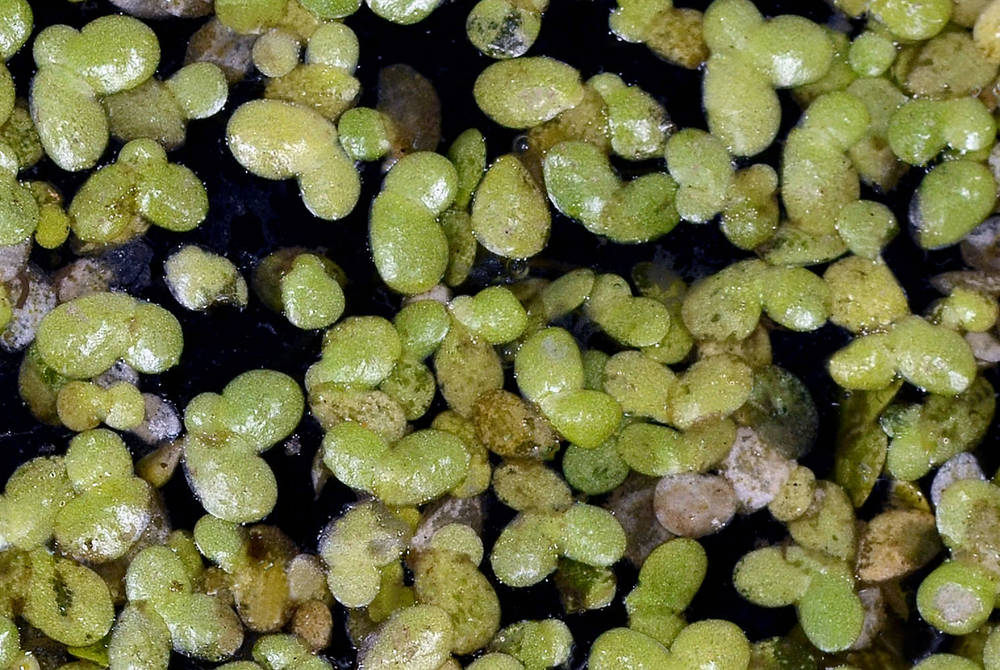Lemna minor
Lemna minuta
common duckweed
least duckweed
up to 15 cm long.
up to 1.5 cm long.
absent.
absent.
floating on the surface, elliptic to obovate; (1)2–5(8) mm long, 1.3–2 times longer than wide, generally in clusters of 2 or 3 (sometimes many);
veins 3(5); if more than 3 then the outer veins branching from inner veins;
lower surface flat, green, rarely reddish near the root attachment;
upper surface flat, green (sometimes reddish); and smooth.
floating on the surface, widely elliptic to oblong or obovate; (0.8)1– 2.5(4) mm long, 1–2 times longer than wide, slightly thicker in the middle with thinner margins, 1 vein, often faint; less than 67% the distance from root attachment to apex;
lower surface flat, green;
upper surface flat, green; and usually smooth, sometimes with papillae along the midline, generally in clusters of 2 (sometimes 4).
Lemna minor
Lemna minuta
Freshwater. 0–1600 m. BR, Casc, CR, Est, Lava, Owy, Sisk, WV. CA, ID, NV, WA; throughout North America; nearly worldwide. Native.
Lemna minor is distinguished from similar species with more than one vein (L. gibba and L. turionifera) by a lack of distinctive features such as a midline ridge or papillae on the upper surface, reddish or inflated lower surface, turions, and an asymmetrical apex.
Freshwater. 50–1400 m. BR, CR, Owy, WV. CA, NV, WA; throughout North America; South America; Eurasia. Native.
This is the smallest Lemna species in Oregon.
Katie Mitchell
Katie Mitchell
- Local floras:
BC,
CA,
OR,
WA
- Local Web sites:
CalFlora,
CalPhotos,
Flora NW,
PNW Herbaria
WildflowerSearch
iNaturalist (observations)
USDA Plants Database
- LBJ Wildflower Center
- SEINet
- Plants of the World Online
- Encyclopedia of Life
- Wikipedia
- Google Image Search
- Local floras:
BC,
CA,
OR,
WA
- Local Web sites:
CalFlora,
CalPhotos,
Flora NW,
PNW Herbaria
WildflowerSearch
iNaturalist (observations)
USDA Plants Database
- LBJ Wildflower Center
- SEINet
- Plants of the World Online
- Encyclopedia of Life
- Wikipedia
- Google Image Search




